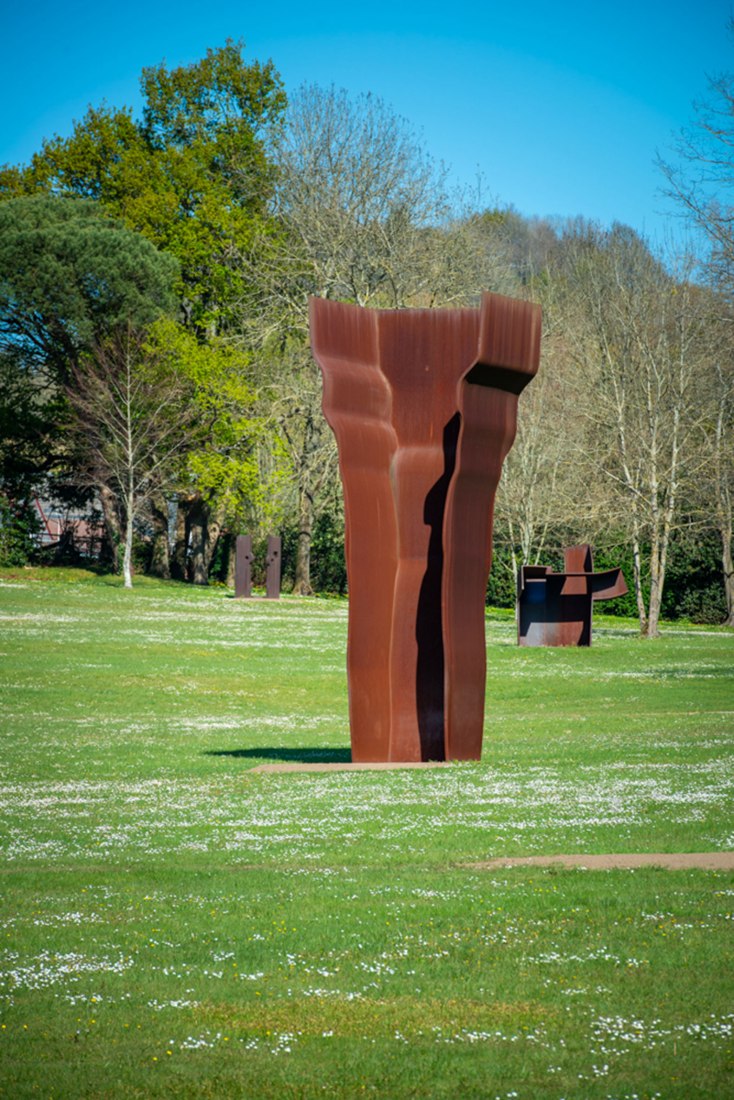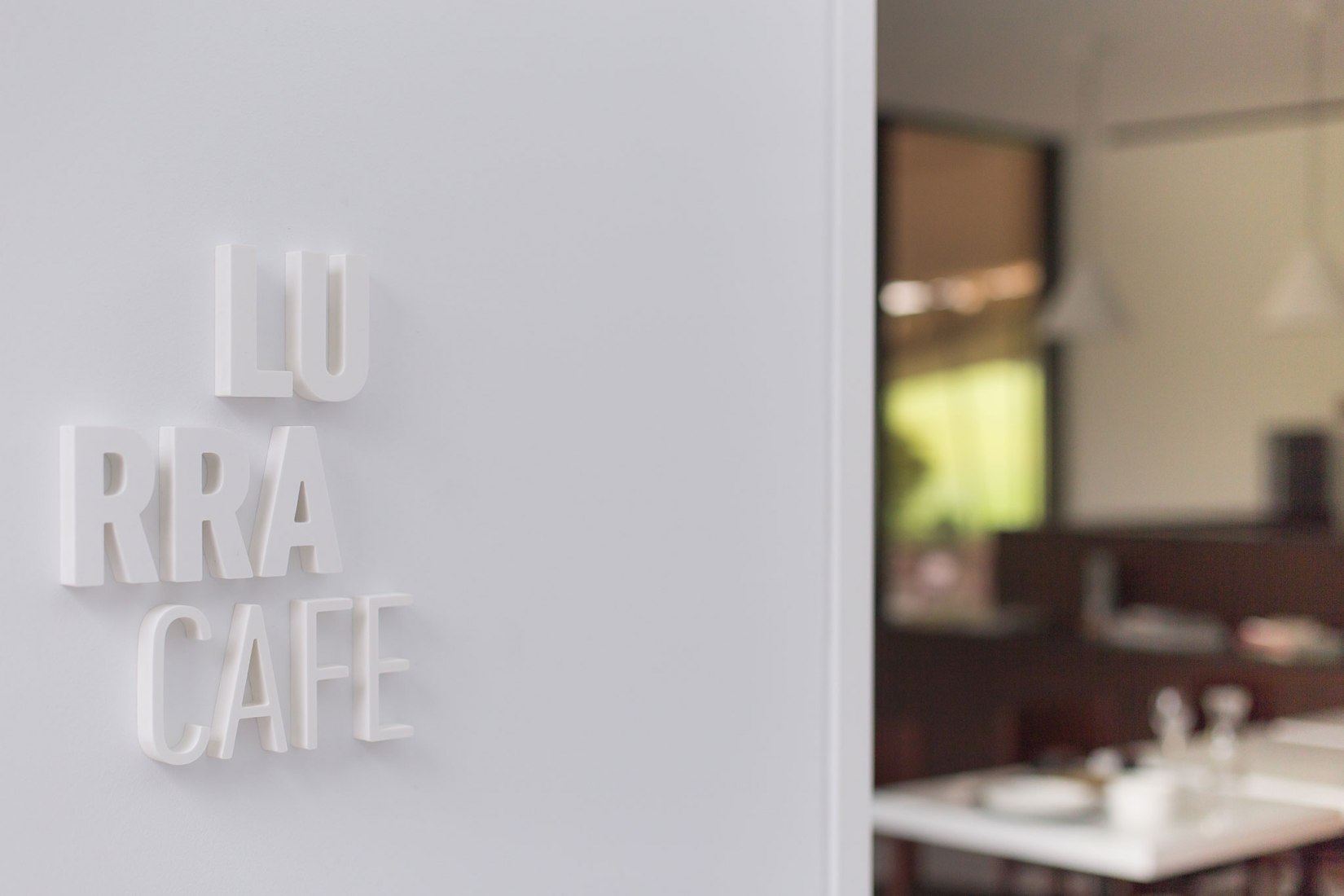The exhibition brings together works of iron, granite, alabaster, plaster and paper, without neglecting significant series such as Gravitaciones (sculptures on paper where relief and emptiness are especially important) and Lurras y Óxidos (pieces made with chamotte earth). But the works of this first exhibition do not come only from the Succession of Eduardo Chillida, but also pieces coming from loans of museums, institutions and private collections that rarely have been exposed previously.
In addition, in the sample you can also discover important archival material which includes photographs, original manuscripts, correspondence or catalogs of exhibitions of the first years of his artistic career, all belonging to Eduardo Chillida's archive, permanently preserved In the museum. The exhibition will be displayed in chronological order, so that the visit is a trip to the life and career of Eduardo Chillida.
To be able to accommodate a large influx of visitors again, it has had to carry out in Chillida Leku a respectful renewal to adapt it to the needs of the current public, being faithful to the memory of Eduardo Chillida. The Paris studio Laplace has been responsible for this restoration that includes new lighting, insulation, a sustainable coffee and better access for visitors, with the collaboration of the Dutch landscape painter Piet Oudolf for the design of the site surrounding the landlord.
In addition, in the sample you can also discover important archival material which includes photographs, original manuscripts, correspondence or catalogs of exhibitions of the first years of his artistic career, all belonging to Eduardo Chillida's archive, permanently preserved In the museum. The exhibition will be displayed in chronological order, so that the visit is a trip to the life and career of Eduardo Chillida.
To be able to accommodate a large influx of visitors again, it has had to carry out in Chillida Leku a respectful renewal to adapt it to the needs of the current public, being faithful to the memory of Eduardo Chillida. The Paris studio Laplace has been responsible for this restoration that includes new lighting, insulation, a sustainable coffee and better access for visitors, with the collaboration of the Dutch landscape painter Piet Oudolf for the design of the site surrounding the landlord.
"The museum is the center of Chillida's universe, the best place to know and spread his work, a project rooted in his land." We celebrate this new stage of the museum, which we have renewed to adapt it to the needs of the 21st century. "
.Mireia Massagué, director of the museum
About Chillida Leku, an author's museum.
Founded by Eduardo Chillida during his lifetime, Chillida Leku is home to the most comprehensive body of works by the artist. It is located on the outskirts of Hernani near San Sebastián and comprises a sculpture park and an exhibition space inside the converted caserío Zabalaga, a traditional Basque country house dating from the sixteenth century.
Once the works were concluded and the caserío was brought back to optimum conditions, the museum opened to the public on 16 September 2000, and since that date, Chillida Leku upheld its mission to promote and conserve his work.
In order to interfere as little as possible in the museum’s unique natural surroundings, Chillida Leku has barely any signage or explanatory panels. Instead, twenty of the sculptures located around the gardens, as well as ten works exhibited inside the caserío will have QR codes so that visitors to the museum can scan them for further information.
About the exhibition "Eduardo Chillida. Echoes".
The title of the exhibition is borrowed from Oyarak I (Echoes I), an iron sculpture from 1954 on view on the ground floor of the museum. The word “echoes” resonates with the idea of repetition, core to Chillida’s practice and a focal point for series exploring one single concept. “Echoes” also brings to mind the sonic quality of the sculptor’s work, materialising sounds that reverberate in space.
The exhibition is conceived chronologically and the walkthrough is divided into different phases, largely delineated by the materials and techniques used in each one, as reflected in the names of the sections: 1948-1951 Paris, first sculptures in plaster; Return to the Basque Country: first sculptures in iron; Ilarik and Yunques de sueño; Sculptures in alabaster, light and architecture; Lurrak and Óxidos; Public projects; and Work on paper: drawings, collages, engravings and Gravitaciones.
In addition to the exhibition, the series Peine del Viento (The Comb of the Wind) is also on view, one of the artist’s most iconic creations. In fact, this series is earmarked as the first collectible following the reopening of the museum.
"Ecos refers to the concept of music and sonority that Aita worked so much, ideas that have a beginning and that develop over time, in one sense and in another, like the waves and the sea. It is the perfect exhibition for this reopening ", explained Ignacio Chillida, who together with the museum team, curated this exhibition. "This exhibition has allowed us to collect work that had not been in Chillida Leku for a long time, including six pieces that had never been in the museum, it has been very exciting to put these works together".
About the architectural renovation.
The renovation of the Chillida Leku in San Sebastián is the latest achievement by Laplace, the Parisbased practice run by Luis Laplace and Christophe Comoy renowned for projects that require the intuitive and seamless integration of architecture, art and high-end design. The appeal of taking on the Chillida museum was rooted in a lifelong affinity for the artist himself.
Luis describes the project as art direction of sorts, requiring an ongoing dialogue with the language of the site and Chillida’s work.
"My task was essentially to direct every aspect of the project towards a coherent idea throughout the architecture, landscape and artistic design, bringing together the intentions of international experts and the Chillida family, and sourcing materials and artisanal skills locally in a way that would enhance the artist’s guiding narrative."
.Luis Laplace
This organic process evolved over many conversations, with the assistance and commitment of Chillida’s grandson Jon Essery Chillida as local architect.
Preserving the integrity of the building required a measure of repair: the removal of the Spanish terracotta tiles in order to insulate the roof; the seamless concrete of the ground level was cleaned and brought back to life; the timber planks on the first floor were stripped of their faded varnish and re-oiled. Laplace shares with the artist a finely tuned affinity for the keynotes of light, tone and texture.
One of Chillida’s pragmatic choices had been to divide the upper space into smaller climate-controlled rooms for his works on paper. In the interest of creating optimal circulation, these works were relocated externally and the original open flow was restored.
About the landscape and gardens.
Piet Oudolf has been responsible for performing a series of new designs for the landscape surrounding the farmhouse. The project is a collaboration with landscape designer Alvaro de la Rosa Maura.
The key characteristics of the work of renowned landscape designer Piet Oudolf are his interest in introducing lightness, movement and change. Oudolf designs work with nature to create painterly effects and as the plants grow, mature and die they will create a new context for the sculptural and geological language of Chillida’s works. The passing of the seasons will be reflected in the plants, shrubs and the grasses which constitute his planting scheme. The plant palette used by Oudolf has been carefully chosen for the climate of northern Spain and it blends into the landscape employing new and exciting varieties of the species predicated on an ecological approach.
Luis Chillida, president of the Eduardo Chillida Foundation and Pilar Belzunce, has been very excited about this new stage.
"Once again my parents' dream is fulfilled: that all the people who wish to have access to Chillida Leku and enjoy their work and this space that they dedicated so much time and work to".





































































